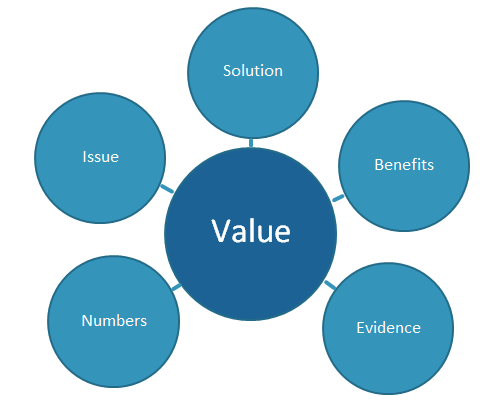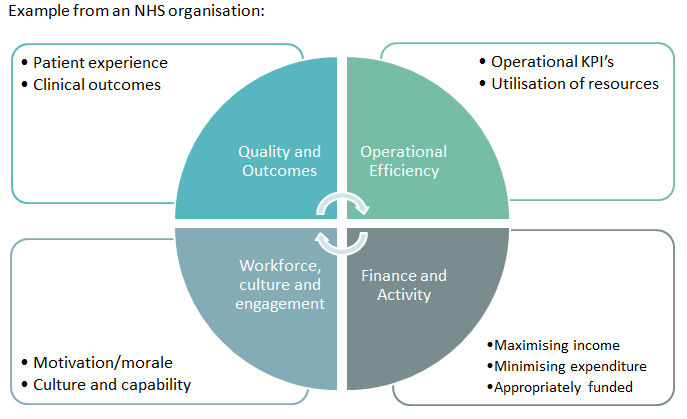Sig Mikladal, Senior Project Manager at TRUSTECH (www.trustech.org.uk @TRUSTECH_NHS), the NHS innovation experts, advises SMEs on how to develop a value proposition to win over the healthcare sector in 2019.
The NHS and the wider healthcare market has an appetite for new, exciting, innovative developments to improve future care across the UK and needs small to medium sized enterprises (SMEs) and entrepreneurs with innovative solutions.
For an SME to enter the NHS with a new product or service can be extremely challenging; not only is it a highly regulated sector, it also demands the benefits of new solutions to be communicated effectively. For any budding innovators with plans to crack the healthcare market in 2019, my key piece of advice is to develop a clear value proposition. The value proposition should be a credible and coherent set of claims that demonstrate the value of the product or service to health and care providers and patients. This practical definition is one used commonly in health technology appraisals and understood by NICE (the National Institute of Health and Care Excellence) and NHS procurement teams.
SMEs often find it challenging to articulate a value proposition that is compelling to NHS decision-makers. It needs to be tailored and specific to the NHS and it requires time and effort to create. The value proposition can make or break an idea and it’s important to avoid being so focused on the product’s features that you fail to examine what it really means to the NHS.
The bigger picture
Before approaching anyone in the NHS, or even starting to develop a solution, SMEs and entrepreneurs need to be aware of the current situation in health and social care.
Research the overall market and understand how it all works. Consider the growing population and associated costs, declining budgets, and limitation of resources; remember that although the NHS has a huge budget which provides great opportunities, it is a highly challenging market with expenditure and requests for time and resource challenged at every step. This is why it is important to make sure claims about improving care and cost savings can be evidenced.
There are several elements that make a good value proposition. Often propositions are driven by a technology push rather than a clinical need or pull and the key is to understand who you are informing or selling to, so think about who you approach.
Understand what your customer sees as valuable; what are they looking for? Is it giving them something they want or need? There are many factors affecting delivery of health and social care, so does it represent value to the system?
As an example I remember being presented with a proposition from an SME that centred on carrying out blood assays required with picolitres of blood, it sounded great but wasn’t relevant in the situation where 3-4 mls of blood was routinely taken, and handling very small amounts of blood provided new problems, so it got no interest.
Remember that the value proposition will change depending on who it is presented to.
Value proposition: five key features
Irrespective of research or product development, there are five key features of a value proposition:

- Issue faced
Describe the issue being faced in the NHS in relation to this indication and current clinical practice. It’s important to bear in mind the scale of the problem that is being addressed and ask yourself questions like “What is the cost to the NHS of doing nothing?”
- The solution
Explain how the proposed product or service can provide a solution to this problem. Detail how the new product can address all, or some, of the issues. Here, the question to answer is, “How does the proposed solution offer an advantage over currently approved or existing solutions?”
- The benefits
Detail the clinical benefits for patients delivered by the product over and above, or instead of, current clinical practice. Think about the clinical effectiveness.
- The numbers
Here look at the financial case, and cost effectiveness. Detail the resource use and cost savings for the healthcare system delivered by the product over and above, or instead of, current clinical practice; look at all costs versus savings and return on investment.
Ensure you answer questions such was “What is the cost of this solution and how will it be funded?”, “What savings will the innovation realise” or “What benefits will be delivered?”
Of course, cost will always be a major consideration when adopting new innovations. Sometimes, a product or treatment may cost more on a per-unit basis than current methods. However, if the innovation reduces a patient’s length of stay in hospital or drastically reduces procedure failure rate, it may represent an overall saving. For example, the Urolift® system is slightly more expensive than the conventional procedure for treating an enlarged prostate (transurethral resection), but as the procedure takes just thirty minutes, has reduced side effects and eliminates the need for patients to recover in hospital, therefore represents a potential overall cash release.
- Evidence
Often at this stage innovations have little to no clinical evidence as it can be a huge challenge for this evidence to be collected, especially for SMEs with limited resources.
However, remember the need for evidence to substantiate the claims. Substantiate all claims with real evidence demonstrated from validated evaluations, and perhaps even consider whether you have the resources to carry out a small-scale test.
Also consider safety. Despite the current financial climate, patient care will always be the most important factor when selecting the best innovations. To be considered and successfully adopted, an innovation will always have to be supported by clinical evidence demonstrating how it can make a positive difference to existing treatment pathways.
NHS: areas of focus
Another useful tip when putting together a value proposition is to take time to consider the key areas of focus for the NHS organisation you are approaching.

In the current health and social care market, it’s important to address problems that stand in the way of effective and efficient care delivery. There are currently powerful drivers for change which generally focus on quality, efficiency and money and a growing focus on care at home, improved patient safety, earlier diagnosis, earlier discharge, enhanced recovery, and providing real value for money.
Expert help
There is support available for SMEs to help develop a compelling value proposition that strikes the right chord with the NHS. For instance, delivered by TRUSTECH, in partnership with Health Innovation Manchester and the Business Growth Hub , the STEP INto Healthcare programme helps SMEs improve their pitch to potential investors and customers, and increase their chances of success.
The intensive support programme is designed for businesses with aspirations to scale-up, and has already helped and educated a number of SME’s and provided them with access to networks, strategic knowledge and market opportunities, through one-to-one support and a number of workshops with leading industry experts.
If you have an innovative health or social care solution and would like to engage with the NHS, contact TRUSTECH on 0161 276 5764, email innovations@trustech.org.uk, visit www.trustech.org.uk and follow us on Twitter @TRUSTECH_NHS




